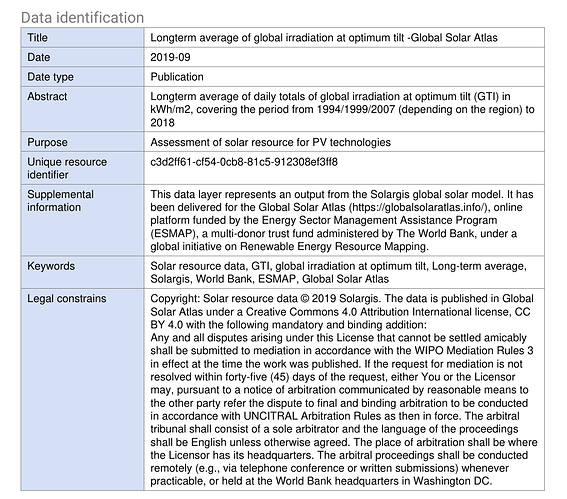The IEA is trying its hands on open sourcing models with the methane abatement cost model being available on GitLab, apparently under a GPLv3 license (code) and CC BY SA 4.0 (data).
(Ignoring the fact that you need to register in order to get access to the data, which some of us already don’t consider “open” data)
To me as an amateur the licensing terms look ok-ish, they remind about the need to credit IEA and present a preferred (not a compulsory) attribution note
If you convey the Code and/or share the Datasets, you must give appropriate credit to the IEA.
The IEA’s preferred attribution is:
IEA Methane Abatement Model, IEA, International Energy Agency / Methane / Abatement model / Cost calculation · GitLab,
License: source code: GNU GPL v3.0; or datasets: CC BY SA 4.0.
They then continue with the following additional notes:
Please note the following:
-
if the OECD/IEA cannot settle amicably with you any disputes relating to the model, either you or the OECD/IEA may, pursuant to a notice of arbitration communicated by reasonable means to the other, elect to have the dispute referred to and finally determined by arbitration. The arbitration shall be conducted in accordance with the Arbitration Rules of the United Nations Commission on International Trade Law (UNCITRAL) then in force. The arbitral tribunal shall consist of a sole arbitrator and the language of the proceedings shall be English unless otherwise agreed. The place of arbitration shall be Paris. The arbitral proceedings shall be conducted remotely (e.g., via telephone conference or written submissions) whenever practicable. The parties shall be bound by any arbitration award rendered as a result of such arbitration as the final adjudication of such a dispute; and
-
Nothing in the licensing terms referred to above constitutes or may be interpreted as a limitation upon,
or waiver of, any privileges and immunities that apply to the OECD/IEA or you, all of which are specifically reserved.
Are notes like this fine from a legal perspective?
While I can understand that they might want to re-emphasize aspects of the license, for me as a user it introduces uncertainty about the license and exact terms.
It give them a “C” for their repository licensing.
Deductions because of
(a) A custom formatted LICENSE file in the code repository, that only states the license and also states the license for the data
(b) the additional notes in the license file,
(c) them not including or linking to a copy of GPLv3 and CC BY SA 4.0,
(d) using CC BY SA 4.0 instead of CC BY 4.0 .
Since I like good news, I’d like to add one entrant to the list and immediately remove them again:
We’ve been using CM SAF products (SARAH-2 and SARAH-3) by EUMETSAT for some time. Their website simply states:
All intellectual property rights of the CM SAF products belong to EUMETSAT. The use of these products is granted to every interested user, free of charge. If you wish to use these products, EUMETSAT’s copyright credit must be shown by displaying the words “copyright (year) EUMETSAT” on each of the products used.
Which is not terrible, but not great either.
So I reached out.
They were very responsive and friendly. Within a day I had a response. I was happy:
It turns out, they had already changed their license to CC BY 4.0 some time ago, and had updated the documentation, but apparently missed a few places on their websites. So they’ll update their website soon and the issue is closed.
I just wish it were that simple with other institutions… .
![]() This topic does not cover data portals that are either silent on licensing or subject to clear but problematic licensing terms — problematic relative to open science that is.
This topic does not cover data portals that are either silent on licensing or subject to clear but problematic licensing terms — problematic relative to open science that is.

